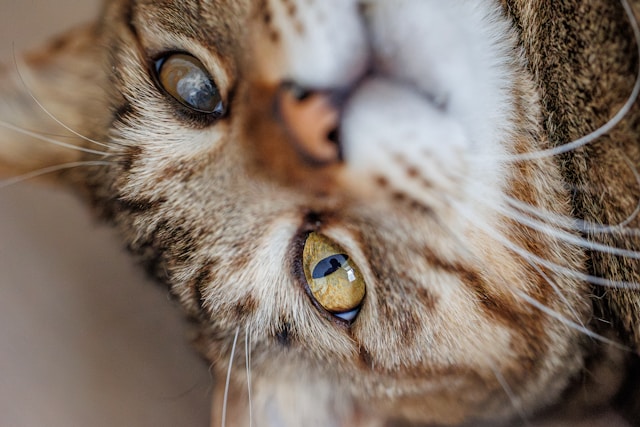Feline Feng Shui Designing Your Home for Maximum Cat Happiness

Creating a harmonious living environment is beneficial not only for humans but for our feline companions as well. The ancient Chinese practice of Feng Shui, which focuses on harmonizing individuals with their surrounding environment, can be adapted to ensure your cat’s happiness and well-being. This blog explores how to apply Feng Shui principles to design a home that maximizes your cat’s comfort and contentment.
1. Understanding Feline Feng Shui
1.1. The Basics of Feng Shui
Feng Shui is a practice rooted in Chinese philosophy that aims to harmonize individuals with their environment. It involves arranging spaces to promote balance and positive energy flow.
- Qi (Chi): The concept of Qi refers to the flow of energy in a space. Good Feng Shui ensures that Qi flows smoothly and positively throughout the environment.
- Five Elements: Feng Shui incorporates five elements—wood, fire, earth, metal, and water—that interact to create harmony and balance.
1.2. Applying Feng Shui to Cats
Applying Feng Shui to create a cat-friendly home involves adapting these principles to cater to your feline companion’s needs.
- Comfort and Security: Focus on creating a space that provides comfort, security, and stimulation for your cat.
- Positive Energy Flow: Ensure that your cat’s living areas have a positive energy flow, free from clutter and distractions.
2. Creating Cat-Friendly Spaces
2.1. Designing Cat-Friendly Zones
Create designated areas in your home that cater specifically to your cat’s needs.
- Resting Areas: Provide cozy, quiet places where your cat can retreat and relax. Cat beds or blankets placed in elevated spots, like shelves or window perches, are ideal.
- Play Zones: Set up areas with toys and climbing structures to keep your cat entertained and active. Cat trees, scratching posts, and interactive toys enhance their environment.
- Feeding Stations: Design a dedicated space for your cat’s food and water bowls. Ensure it’s in a quiet, easily accessible area to avoid stress during mealtime.
2.2. Utilizing Vertical Space
Cats naturally seek elevated spots for observation and safety. Incorporate vertical space into your home design.
- Cat Shelves: Install shelves or catwalks at various heights to allow your cat to climb and explore.
- Window Perches: Provide window perches for your cat to enjoy the view and soak up the sun.
2.3. Ensuring Safe and Comfortable Environments
Feng Shui emphasizes creating safe and comfortable environments. Apply these principles to ensure your cat’s well-being.
- Safe Hiding Spots: Create safe hiding spots where your cat can retreat if they feel overwhelmed. Cat condos or covered beds offer a sense of security.
- Temperature Control: Ensure that your cat’s resting areas are comfortable and protected from drafts. Maintain a moderate temperature throughout your home.
3. Enhancing Energy Flow for Cats
3.1. Decluttering and Organizing
A clutter-free environment promotes positive energy flow and reduces stress.
- Remove Clutter: Keep your cat’s spaces clean and free from unnecessary items. Clutter can obstruct energy flow and create stress.
- Organize: Arrange your cat’s toys, food, and litter boxes in an organized manner. Easy access to these items supports a harmonious environment.
3.2. Balancing Elements
Incorporate Feng Shui’s five elements to create a balanced environment for your cat.
- Wood: Use wooden cat furniture or incorporate live plants to represent the wood element, which symbolizes growth and vitality.
- Fire: Include warm, soothing lighting in your cat’s areas to represent the fire element, which adds energy and warmth.
- Earth: Provide stable, grounded surfaces such as cat beds or mats that represent the earth element, promoting a sense of security.
- Metal: Incorporate metal elements, such as metal cat toys or bowls, to add structure and clarity.
- Water: Ensure your cat has access to fresh water and consider incorporating a small water fountain to represent the water element, which promotes flow and tranquility.
4. Addressing Common Issues
4.1. Managing Stress and Anxiety
Creating a harmonious environment helps manage stress and anxiety in cats.
- Avoid Overstimulation: Ensure that your cat’s environment is not overly stimulating or chaotic. Provide quiet areas where your cat can retreat if needed.
- Create Routine: Establish a consistent routine for feeding, playtime, and grooming. Consistency helps reduce stress and promotes a sense of security.
4.2. Enhancing Social Interactions
Feng Shui principles can also enhance social interactions between you and your cat.
- Interactive Spaces: Design interactive spaces where you and your cat can engage in play and bonding activities. This strengthens your relationship and supports your cat’s emotional well-being.
- Positive Reinforcement: Use positive reinforcement to encourage desirable behaviors. Consistent praise and rewards contribute to a positive and supportive environment.
5. Feng Shui for Multiple Cats
5.1. Managing Cat Dynamics
If you have multiple cats, ensure that their individual needs are met while maintaining a harmonious environment.
- Separate Resources: Provide separate feeding stations, litter boxes, and resting areas to reduce competition and territorial disputes.
- Vertical Space: Increase the availability of vertical space to allow each cat to have their own territory and observe from elevated spots.
5.2. Promoting Harmony
Encourage positive interactions and reduce conflicts between cats.
- Gradual Introductions: Introduce new cats gradually and in a controlled manner to minimize stress and ensure a smooth transition.
- Shared Spaces: Design shared spaces with multiple resources to promote cooperation and reduce competition.
6. Practical Tips for Implementing Feline Feng Shui
6.1. Observing Your Cat’s Preferences
Pay attention to your cat’s preferences and behaviors when arranging their environment.
- Observe Behavior: Note where your cat likes to spend time and what areas they avoid. Use this information to make adjustments to their living spaces.
- Adjust as Needed: Be flexible and willing to make changes based on your cat’s responses and needs.
6.2. Creating a Positive Atmosphere
Feng Shui emphasizes creating a positive and harmonious atmosphere. Apply these principles to enhance your cat’s environment.
- Use Soothing Colors: Incorporate calming colors such as blues and greens in your cat’s spaces to promote relaxation and tranquility.
- Aromatherapy: Use cat-safe essential oils or diffusers to create a soothing atmosphere. Avoid strong scents or chemicals that may be harmful to your cat.
7. Conclusion
Applying Feng Shui principles to create a cat-friendly home involves designing spaces that cater to your feline companion’s comfort, security, and happiness. By focusing on creating designated areas, enhancing energy flow, and addressing common issues, you can create a harmonious environment that promotes your cat’s well-being. Incorporating vertical space, decluttering, and balancing the five elements contribute to a positive and supportive living space for your furry friend. Embrace the principles of Feline Feng Shui to enrich your cat’s life and strengthen your bond. A thoughtfully designed home not only benefits your cat but also creates a peaceful and harmonious environment for everyone.




